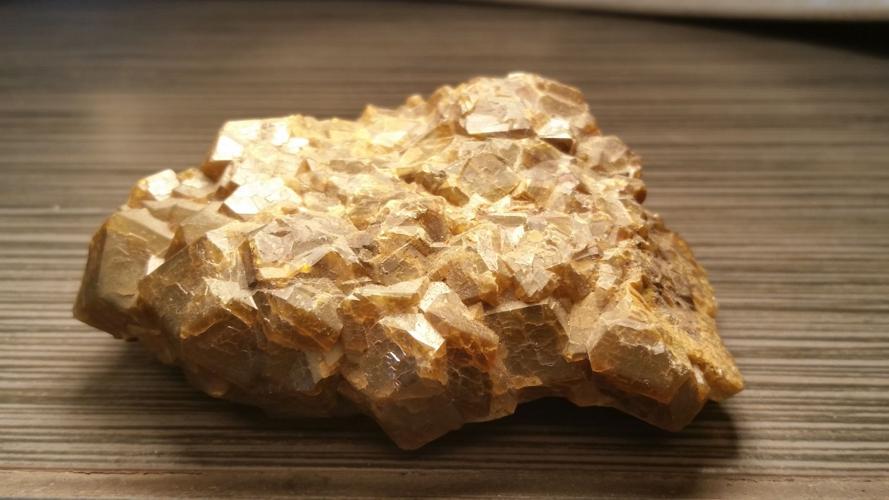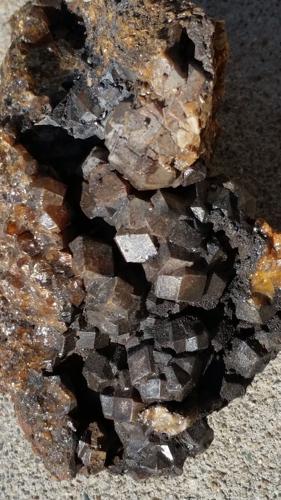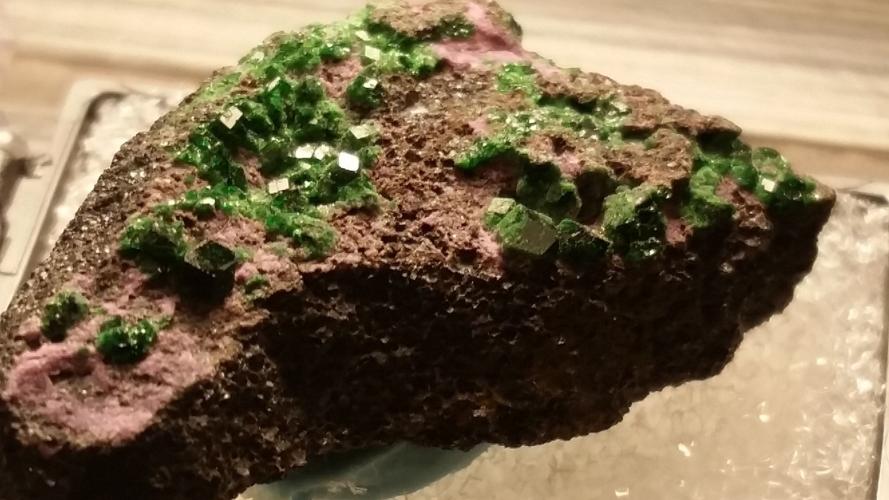Garnets have been a highly collectible gemstone since prehistoric times, and Arizona is renowned for hosting some of the best specimens.
These gemstones are formed as a result of a combination of high temperatures and pressures. They crystallize in the cubic system. Six main types of the garnet group include almandine, andradite, grossular, pyrope, spessartine and uvarovite. The English term garnet originates from the Old French term grenat, meaning “red.”
Garnets are classified as a group of silicates containing aluminum, calcium, chromium, ferrous iron, ferric iron, magnesium, manganese and titanium. Silicates are classified as the largest and most common class of minerals. They are found in igneous and metamorphic rock with attributes of hardness, transparent, opaque-to-translucent glassy luster and an average density.
Early industrial uses of garnet included its use as a coating for sandpaper first manufactured by Henry Hudson Barton of Barton Mines Corp. in 1878. Its abrasive qualities are ideal for grinding and sawing stones. Almandine has been used as color for stained glass windows. Almandine and pyrope appear red due to the presence of iron. Uvarovite is a chrome garnet known for its fine emerald green color. Many of the world’s best specimens are mined in the Ural Mountains of Russia.
In Arizona, several sites produce gem garnets including pyrope. These include the Four Corners area in northeastern Arizona located on the Navajo Indian Reservation, at Garnet Ridge, 5 miles northwest of the Mexican Water Trading Post, and in Buell Park, 16 miles north of the tribal headquarters at Window Rock on the Arizona border with New Mexico. Pyrope garnets are popular among collectors and are fashioned into faceted stones averaging one-half- to 1-and a-half carats in size, with some up to 5 carats. Their appearance ranges from orange-red to deep ruby-red pebbles.
Almandine-Spesartine garnets are found at Lion Spring on the southwestern flank of Elephant Mountain in the Aquarius Mountains in Mohave County. The site has produced a wide array of sharp garnet crystals embedded in a light-colored rhyolite matrix.
The Washington-Duquesne area in the Patagonia Mountains is a place where garnets are common and are found as gangue rock resulting from local mining operations. The Empire Mine, patented by a Captain O’Connor in 1874, was originally worked by chloriders for the next several decades. Production included high-grade lead silver ore. The Duquesne Mining and Reduction Co. acquired the property in 1905. George Westinghouse, inventor of the railroad air-brake, served as the president, consolidating 84 patented lode claims including the Bonanza and Empire Mines. An aerial tramway was built to service the Pride of the West Mine to the mill and smelter at Washington Camp.
Andradite is named after the Brazilian mineralogist Josè Bonifácio de’Andrada e Silva, who first described its properties. Andradite, a calcium iron silicate that commonly occurs in contact metamorphic rock and impure limestone, is scattered throughout the tailings of the Empire Mine. These garnets appear dark-brownish green with adamantine luster and are stained black by oxide of manganese and iron. The green coloration is derived from the presence of chromium impurities. Some andradite crystals from this locality have been found up to 3 inches in diameter.
Stanley Butte in the Stanley district in Graham County, 25 miles south-southeast of the town of San Carlos, is another location for andradite sometimes appearing with grossular. At this locality andradite is found as massive material with green-tinted brown crystals up to 2 inches.
While many of the above localities were open to collecting garnets and other minerals and gemstones years ago, the transfer of land rights and titles to property have now made many of them off limits to visitation. It is best to contact local authorities ahead of time to better ascertain whether or not collecting is permissible.







